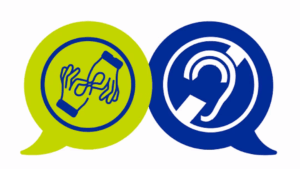Legal interpreting isn’t for the faint-hearted and is widely regarded as the most difficult form of interpreting. As a new interpreter approaching the subject, you’ll need to prepare yourself for commitment to years of training. However, legal interpreting provides one of the most stable careers in the interpreting industry. Once you’ve mastered the basics and gained some experience, it’s highly possible to make legal interpreting a full-time job. To start, it’s important to understand the fundamental differences between medical and legal interpreting.

Differences between medical and legal interpreting
Medical and legal interpreting differ in several ways. Medical Interpreting is patient-based, often conversational in tone, and compassion-centric. In medical interpreting, the meaning is most important to convey and lowering the register is sometimes necessary. Business casual dress is acceptable. Legal interpreting, by contrast, is quite formal. Everything each party says must be interpreted exactly, word-for-word. The language and exact phrasing are the most important to convey so lowering the register is unacceptable. Making cultural clarifications, a vital part of the medical interpreter role, is also unacceptable. Business professional dress is most appropriate.
As a new interpreter, you’ll gradually develop your interpreting style: a blend of consecutive and simultaneous interpreting. While it is possible for legal assignments to remain in the bounds of consecutive interpreting, it’s harder to maintain. Legal interpreters often find themselves slipping into simultaneous interpreting to maintain flow. This also helps inhibit side conversations, as the interpreting happens with rapid back-and-forth.
As with medical interpreting, preparation is key. If you’re working with an agency, always ask for case details ahead of the assignment. If you’re working independently, ask your site contact or the person who hired you. Studying ahead of the interpreting session isn’t just mental preparation; it’s emotional preparation too. Your confidence as an interpreter is a vital part of keeping any interpreting assignment professional and successful.
Top challenges for new legal interpreters
Most interpreters begin their careers in medical interpreting. Making the transition to legal interpreting is a daunting process. Let’s break down the top challenges for new legal interpreters:
-
Legal Vocabulary:
- Learning legal vocabulary is the first challenge for new legal interpreters. It’s vital that you commit to extensive pre-study before your first legal assignment. Find a legal glossary online or in book form: the American Bar Association Glossary is an excellent place to start. It’s highly regarded in the industry and the American Bar Association frequently updates the information. Learning legal vocabulary in both your target language and English is the first step to becoming a successful legal interpreter.
-
Language Precision:
- Language precision is arguably the most difficult part of legal interpreting. Learning legal vocabulary contributes to language precision, but only practice makes perfect. In legal interpreting, lowering the register and giving cultural clarifications are unacceptable. A legal interpreter acts only as a language conduit: interpreting one language to another and back. Legal assignments are typically on record and results rely on exact phrasing. You must interpret as accurately and precisely as possible.
It’s important to note that interpreting as accurately and precisely as possible works in everyone’s favor. If a non-English speaker doesn’t understand the legal language, it’s their responsibility to ask for clarification. You’ll then interpret the clarification conversation between both parties without interjecting. In medical interpreting, the interpreter assumes much of the burden of comprehension. The interpreter must monitor body language (and spoken language) to be sure that both parties understand each other. In legal interpreting scenarios, that burden is placed on the lawyers and non-English speaker. It is not the interpreter’s role to check for comprehension in a legal setting.
-
High-Pressure Environment:
- Another aspect of legal interpreting that’s often difficult for new interpreters is the high-pressure environment. Medical appointments frequently require less formality than legal appointments. They’re conversational in tone, particularly when working with mental health and therapy sessions. Less specific vocabulary is necessary and language precision isn’t as important as conveying the meaning of a word or phrase. Legal assignments are much higher-pressure work environments between the language precision and vocabulary needs alone.
-
Training:
- Deciding which legal interpreter training fits your needs is another challenge. Court interpreting programs are an excellent path to an interpreting career, but they vary from state to state. Court interpreting programs offer limited languages and certification offerings vary. Contact your state court system to discuss your options. Often, “court qualified” interpreters are highly acceptable for most legal assignments. This means that while formal certification isn’t available for your language, agencies and the court consider you qualified to interpret. Qualification is based on interpreting experience, language proficiency, and skill demonstration.
Global Arena’s 16-Hour Interpreting Training
Looking for a place to start? Global Arena’s 16-hour interpreting program covers both medical and legal interpreting. We offer a firm foundation for new interpreters just starting in the industry. Experienced interpreters also benefit from brushing up on their skills and industry knowledge. The course takes place over zoom, on four consecutive days, from 8:30 am- 12:30 PM EST. Participants receive a welcome packet with reference materials, including medical and legal glossaries. You’ll also receive a certificate of completion upon passing exam score: useful for interpreting applications and resume-building.




